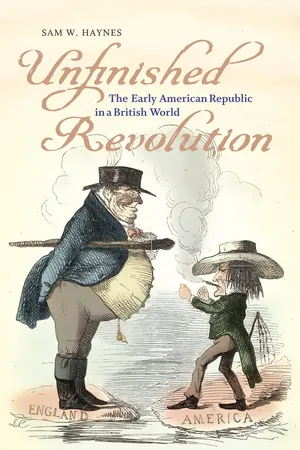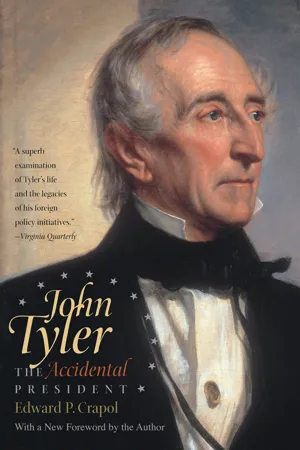History
Texas Annexation
The Texas Annexation refers to the process through which the Republic of Texas became part of the United States in 1845. After gaining independence from Mexico in 1836, Texas sought annexation by the United States, which was initially met with resistance due to concerns over the expansion of slavery. However, Texas eventually joined the Union as the 28th state, leading to tensions with Mexico and contributing to the outbreak of the Mexican-American War.
Written by Perlego with AI-assistance
Related key terms
3 Key excerpts on "Texas Annexation"
- eBook - ePub
- Robert A. Calvert, Arnoldo De Leon, Gregg Cantrell(Authors)
- 2020(Publication Date)
- Wiley-Blackwell(Publisher)
5 Statehood, Secession, and Civil War, 1848–1865Annexation marked a milestone in the history of Texas. Freed from any realistic threat of Mexican reconquest, and bolstered by the economic, military, and diplomatic benefits that flowed from American statehood, Texas enjoyed greater latitude to chart its own course. In the years between annexation and the Civil War, the state became more closely aligned with the culture, politics, and economy of the Deep South. Slavery and cotton assumed greater importance, setting the stage for Texas to follow a distinctly Southern path in the decades after the war.Following annexation, Texas remained a magnet for immigrants seeking new beginnings. The first federal census taken in Texas in 1850 revealed that 212,000 persons (including slaves) inhabited the state. This population was ethnically and culturally diverse, but as Table 5.1 on population origins shows, Anglo Americans from the southern United States accounted for more than half of all Texas residents.Actually, the US South provided two different streams of immigrants. People from the Lower South–the states from South Carolina west to Louisiana along the Gulf Coast–clustered in eastern and southeastern Texas. Not surprisingly, this section of the state hosted commercial farms that used slave labor to grow cotton, sugar, and rice. In contrast, inhabitants from the Upper South–the border states separating the Deep South from the North, ranging westward from Virginia to Missouri and Arkansas–gravitated toward the north and north‐central counties of Texas. Most of these people ran family farms, depending less on cotton and more on the production of foodstuffs, primarily corn and wheat.The 1850 census also listed Anglo Texans who had come from states outside the South–some 10,000 of them. The largest number of these persons hailed from the Midwest; fewer had arrived from New England or the mid‐Atlantic states (Table 5.1 - eBook - ePub
Unfinished Revolution
The Early American Republic in a British World
- Sam W. Haynes(Author)
- 2010(Publication Date)
- University of Virginia Press(Publisher)
38Meanwhile, support for annexation seemed to be growing steadily as many prominent Democrats sought to develop an expansionist program of their own. Andrew Jackson, always a political force to be reckoned with, even in retirement, came out publicly in favor of “re-annexation” (like many Americans, he insisted that Texas had been acquired under the terms of the 1803 Louisiana Purchase). Bolstering the administration’s claim that Texas under the aegis of Great Britain imperiled the Western states, Jackson argued that a British army on the banks of the Sabine River would be well poised to strike at Louisiana and Arkansas, inciting slaves to revolt against their masters and threatening the entire Mississippi River Valley.39 Perhaps the most imaginative case for annexation was made by Mississippi senator Robert J. Walker, author of a widely influential open letter on the issue published early in 1844. Walker presented a litany of reasons for annexation, but at its core his argument skillfully played upon the Negrophobia and Anglophobia common to Americans of both sections. The growth of slavery in Texas, he argued, should be no less desirable to the North than to the South, for it would relieve the United States of the demographic pressures of an expanding black population. Texas as a state in the union, he predicted, would serve as a safety valve for thousands of slaves who might otherwise migrate to the free states as plantation agriculture receded in the Upper South. If, on the other hand, Texas should be allowed to remain independent, it would soon be overrun by English colonists who would establish a new, antislavery client state of the British empire. Like Jackson, Walker couched his argument in the language of a nation in peril. “Though saturated with blood, and gorged with power,” Walker raged, Britain “yet marches on her course to universal dominion; and here, upon our own borders, Texas is next to be her prey.”40 - eBook - ePub
- Edward P. Crapol(Author)
- 2012(Publication Date)
- The University of North Carolina Press(Publisher)
Washington Globe , one of the nation’s leading newspapers. Walker’s message to the American people outlined the manifold reasons why the United States should annex Texas by reiterating the arguments made publicly the year before by Thomas Gilmer and more recently by Secretary Upshur. The Walker letter was the last and the most successful of the trial balloons sent up by Tyler’s allies. It quickly was reprinted in pamphlet form and millions of copies were circulated to rally public support for annexation, especially among uncommitted northern Democrats and skeptical fence sitters throughout the country.Senator Walker’s brief for annexation proved to be a multipurpose masterwork of propaganda. He deftly pressed the right buttons in the debate and offered something for everyone. For those who had constitutional or legal qualms about annexation, his advice was simple—“not to worry.” Taking Texas actually would be the reannexation of territory earlier claimed by the United States and unwisely ceded to Spain in the Florida treaty of 1819. “This is no question of the purchase of new territory,” Walker reassured his countrymen, “but of the re-annexation of that which once was all our own. It is not a question of the extension of our limits, but of the restoration of former boundaries.” Also, the senator believed the reannexation of Texas could be accomplished in three possible ways—by treaty, by an act of Congress without a treaty, or by the authority the states had to “annex additional territory with the sanction of Congress.” Senator Walker was confident that all three of his suggested methods of annexation met the requirements of the Constitution.For Americans who worried that bringing Texas into the Union would be too great an extension of territory and thus a threat to the viability of the republic, Walker reminded them of their young nation’s successful historical record of territorial expansion. Similar concerns had been raised about the Louisiana Purchase, concerns Walker believed had been laid to rest by President James Monroe in his 1823 annual message: “It is manifest, that by enlarging the basis of our system, and increasing the number of States, the system itself has been greatly strengthened in both its branches. Consolidation and disunion have thereby been rendered equally impracticable.”
Learn about this page
Index pages curate the most relevant extracts from our library of academic textbooks. They’ve been created using an in-house natural language model (NLM), each adding context and meaning to key research topics.


